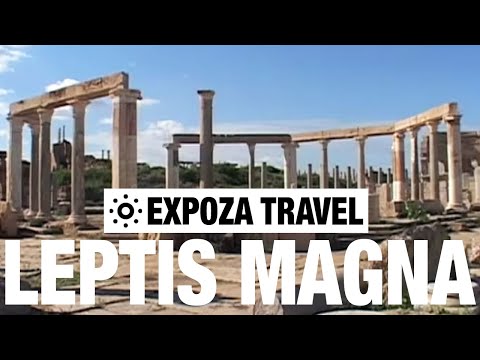
Nestled on the edge of the Mediterranean Sea, in the expansive landscape of Libya, lies one of history’s most breathtaking architectural treasures: Leptis Magna. Once a prominent city of the Roman Empire, Leptis Magna is considered one of the most beautiful and well-preserved Roman cities in the Mediterranean. This travel video guide aims to explore this ancient site, offering insights into its history, architecture, and how you can plan your visit amidst Libya’s complex travel landscape.
### The Historical Significance
Founded by the Phoenicians in the 10th century BC, Leptis Magna was originally a small trading post. It reached its zenith under Roman rule when native son Septimius Severus became emperor in 193 AD. Under his reign, Leptis Magna transformed into one of Rome’s greatest cities adorned with magnificent public monuments, a sprawling forum, and a spectacular harbor. Today, it stands as a testimony to Roman urbanism and architectural prowess.
### Exploring Leptis Magna through Video
A good travel video guide not only showcases the grandeur of these ruins but also educates viewers about their historical context. As you virtually walk through its arches and colonnades via a video guide, look for:
– **The Arch of Septimius Severus:** One of the most photographed structures in Leptis Magna. This triumphal arch is an exquisite example of Roman architecture and provides detailed bas-reliefs depicting scenes from military campaigns and local mythology.
– **The Hadrianic Baths:** Among the largest outside Rome itself, these baths complex offer insight into social life during Roman times where citizens converged not just to bathe but also to socialize and discuss politics.
– **The Nymphaeum:** Dedicated to water nymphs, this ornate fountain was once part of a grand network supplying water across the city.
– **The Theatre:** Capable of holding up to 4,000 spectators, this semi-circular theatre showcases intricate carvings and offers a glimpse into cultural life where dramas and gladiatorial games were performed.
### Practical Tips for Visiting
Traveling to Libya poses unique challenges due to political instability; however, those able to visit will find Leptis Magna an unparalleled archaeological site:
– **Safety First:** Always check your government’s travel advisories for Libya. Consider traveling with an organized tour for enhanced safety.
– **Visiting Conditions:** The best times to visit are spring (April-May) or autumn (September-October) when temperatures are milder.
– **Getting There:** Located about 130 km east of Tripoli near Al Khums city; accessible by road but hiring a local guide or driver is recommended.
– **Preservation Efforts:** Be mindful that this is a UNESCO World Heritage site; abide by all local guidelines aimed at preserving this ancient marvel for future generations.
### Conclusion
Through captivating visuals and detailed commentary on its rich past and present condition within Libya’s contemporary context—a well-crafted travel video guide brings Leptis Magna closer to those who admire ancient civilizations from afar. For history enthusiasts and travelers alike looking forward to exploring new horizons once conditions permit—this mesmerizing Libyan heritage site promises an unforgettable journey back in time amidst breathtaking ruins that narrate tales from over two millennia ago.
